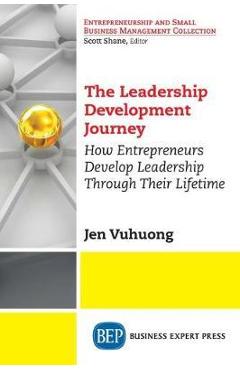7 Entrepreneurial Leadership Workouts: A Guide to Developing Entrepreneurial Leadership in Teams

7 Entrepreneurial Leadership Workouts: A Guide to Developing Entrepreneurial Leadership in Teams
For every Facebook, Amazon, Apple, Netflix and Google, there are literally thousands of small start-ups trying to 'scale up' to become the next Slack, Zoom or Uber. Less than 1% of these start-ups will be able to scale up. For the would-be entrepreneurial leader, for employees working in a start-up, for a potential investor, how to tell if the business-in-the-back-bedroom will ever see its name in lights? Does the entrepreneurial team in question have the muscle-power to succeed? Of the huge array of start-ups founded each year, how do investors increase their chances of backing the one in a thousand that will become a scaled-up company? How can an investor talent-spot entrepreneurial muscle-power? How does the typical entrepreneurial leader, the employee joining the start-up and the investor in the start-up increase the chances of their start-up making it to the 1% club? And there is considerable interest in contemporary entrepreneurial leadership practice. Many would-be founders have a view to setting-up new business ventures, spurred on by opportunities presented by the changing world (and often with your newly minted MBA degree). How can new entrepreneurial leaders convince others (and maybe starting with themselves and their family members) that they can survive and thrive in a competitive world? With the muscle to make it happen? It all depends on whether or not they have this very specific Entrepreneurial Leadership Muscle - or if they can see it in others. As entrepreneurs, how can they identify, develop, build and use this necessary muscle to make things happen in a sustainable way? As investors, what are the readable signs of muscle-power and the willingness to develop that muscle power amongst the entrepreneurial leaders passing the radar screens? How can they screen-in and screen-out? In the high-technology sector alone, recently established high-growth organizations are bringing new and innovative products to market at an extremely rapid pace. A commonality among these companies is, firstly, their relatively short organizational life span to-date (they are often only now about 10-15 years old) and secondly, the speed in which they have grown into multi-billion-dollar organizations. Here we are talking about the few that have made it - and how, and why. What do they have that the others don't? How can entrepreneurs looking to stand out in this crowded and fast-paced field work to ensure survival and sustainability and growth? And attract in
PRP: 180.83 Lei
Acesta este Pretul Recomandat de Producator. Pretul de vanzare al produsului este afisat mai jos.
162.75Lei
162.75Lei
180.83 LeiLivrare in 2-4 saptamani
Descrierea produsului
For every Facebook, Amazon, Apple, Netflix and Google, there are literally thousands of small start-ups trying to 'scale up' to become the next Slack, Zoom or Uber. Less than 1% of these start-ups will be able to scale up. For the would-be entrepreneurial leader, for employees working in a start-up, for a potential investor, how to tell if the business-in-the-back-bedroom will ever see its name in lights? Does the entrepreneurial team in question have the muscle-power to succeed? Of the huge array of start-ups founded each year, how do investors increase their chances of backing the one in a thousand that will become a scaled-up company? How can an investor talent-spot entrepreneurial muscle-power? How does the typical entrepreneurial leader, the employee joining the start-up and the investor in the start-up increase the chances of their start-up making it to the 1% club? And there is considerable interest in contemporary entrepreneurial leadership practice. Many would-be founders have a view to setting-up new business ventures, spurred on by opportunities presented by the changing world (and often with your newly minted MBA degree). How can new entrepreneurial leaders convince others (and maybe starting with themselves and their family members) that they can survive and thrive in a competitive world? With the muscle to make it happen? It all depends on whether or not they have this very specific Entrepreneurial Leadership Muscle - or if they can see it in others. As entrepreneurs, how can they identify, develop, build and use this necessary muscle to make things happen in a sustainable way? As investors, what are the readable signs of muscle-power and the willingness to develop that muscle power amongst the entrepreneurial leaders passing the radar screens? How can they screen-in and screen-out? In the high-technology sector alone, recently established high-growth organizations are bringing new and innovative products to market at an extremely rapid pace. A commonality among these companies is, firstly, their relatively short organizational life span to-date (they are often only now about 10-15 years old) and secondly, the speed in which they have grown into multi-billion-dollar organizations. Here we are talking about the few that have made it - and how, and why. What do they have that the others don't? How can entrepreneurs looking to stand out in this crowded and fast-paced field work to ensure survival and sustainability and growth? And attract in
Detaliile produsului






























